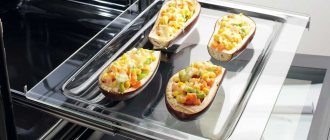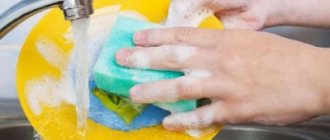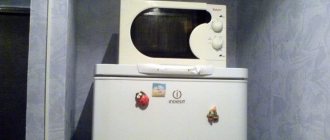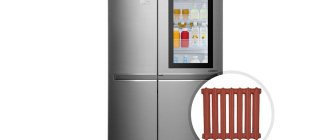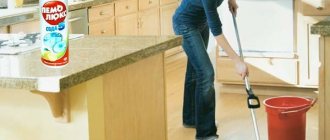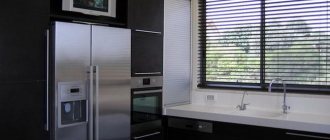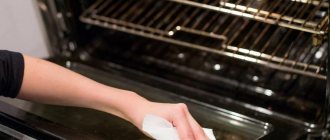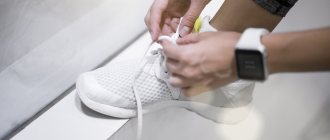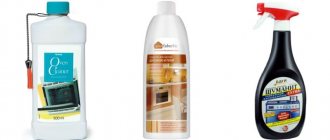Cooking in the oven is a quick and easy task. In it, the meat comes out juicy, and the sweet cakes are well baked. You just need to know which cookware is most suitable for the oven. Yes, you can explore this issue by trial and error, choosing your own baking container. Or ask your friends how to choose suitable cookware for the oven. Below, the article presents the types and characteristics of cookware, as well as tips for choosing the right utensils for the oven.
Shape matters
Adherents of healthy eating know that the healthiest foods are steamed or baked in the oven. The second cooking option involves a richer, juicier taste and crispy crust. It is noteworthy that to prepare a particular dish you need different shapes of containers:
- rectangular is the most common cookware that distributes heat evenly throughout the food. Lasagna, pie, baked fish or meat are prepared in it;
- oval is the second most popular type of vessel for preparing pies, meat, and fish. Thanks to its elongated shape, food is baked perfectly in it;
- round - classic utensils for making cakes and pies;
- the other is a heart, a star, a daisy, silicone molds in the form of geometric shapes, thematic characters, etc. Such variety makes baking non-trivial, attracting the attention of children and adults.
Wall thickness
To cook food in the oven, the dishes must have thick walls and a bottom (0.6-0.8 cm). The uniformity of heating and heat retention in the dishes directly depends on this parameter. It is advisable to use dishes with thick walls in confectionery crafts. For example, in the Ardesto Golden Brown baking dish you will get an excellent delicacy.
Thin-walled vessels are also suitable for cooking in the oven. In particular, such a container is used for instant dishes that do not require long-term heat treatment.
Nuances
Oven cookware is not limited to metal baking sheets. Today you can count on a wide selection: ceramic portion pots, cast iron casserole dishes, silicone baking molds, glass trays, etc. The first thing you should decide is what you are going to cook . The second is the material and workmanship.
Only heat-resistant dishes are suitable for baking:
- steel;
- cast iron;
- ceramics;
- glass;
- silicone
Material and coating of ovenware
And now the most interesting thing - the materials from which baking dishes are made:
- enameled;
- Teflon;
- stainless;
- cast iron;
- ceramic;
- glass;
- silicone.
All of them are suitable for cooking in the oven, you just have to distinguish for which dishes this or that cookware is suitable. You can also use some microwave-safe cookware in the oven. For example, the ARCUISINE 123AA00 model is made of borosilicate glass, which can withstand heating up to 300°C. Therefore, it is used both for heating in a microwave oven and for cooking in the oven. The multicooker bowl can also be placed in the oven. After all, the pan of this household appliance is made of Teflon, and it can withstand temperatures up to 260°C and is suitable for use in electric and gas stoves.
Enameled cookware
One of the most common types. Perhaps many have seen such colorful pots of different colors in the kitchen. In fact, such dishes are made of cast iron, and the enamel only covers it externally. Therefore, you can bake in enamel dishes using an oven. It is important to remember several nuances:
- the maximum temperature this cookware can withstand is 220°C;
- If there is a crack or abrasion on the pan, then it is no longer suitable for use in the oven.
The advantage of such containers is the long-term preservation of heat inside. Enameled dishes will be able to independently “bring” food to readiness in the oven even after the oven is turned off.
This is interesting: How to use the oven? More than 20 useful tips
Thermometer
Probe thermometers are a very convenient and indispensable thing in the kitchen. They allow you to cook meat or bake chicken according to all the rules. With their help, you can definitely find out whether the meat is ready inside - you just need to pierce it.
There are two types of thermometers: some work on the principle of a timer and are triggered when the set temperature is reached, while others simply allow you to determine the temperature of a dish or product. I bought a fairly universal stainless steel thermometer with a digital display that has a wide temperature range.
Teflon
Can I use enamel cookware to bake in the oven? Of course yes. Teflon, a wonderful non-stick kitchen utensil, has long been ingrained in the minds of modern housewives. At almost every step there are advertisements about how safe and good Teflon cookware is. Is it so? Yes, food prepared in such a vessel is practically dietary, because not a drop of extraneous fat is involved in this process. But it is worth remembering that when Teflon is heated above 260°C, it begins to release hazardous substances that can harm human health. Also, when using such utensils, it is important to use only wooden or Ardesto Gemini yellow spatula. After all, metal spoons can damage dishes. It is also worth noting that dishes of this type are very expensive, unlike their “colleagues”.
Level selection
The levels are calculated using the guides on the walls of the oven, on which a baking sheet or wire rack is placed. Often we intuitively choose the middle level. And we do the right thing if we need to bake dishes evenly, because in most cases this is exactly what is required. But there are nuances. When an almost finished dish needs to be browned (for example, chicken legs), move the grill to a higher level for a few minutes. And use the lower level when you need to thoroughly dry the product from below - for example, pizza or an open pie.
Stainless steel
A popular and affordable type of ovenware is made from stainless steel. And this is explained by several facts:
- this type of metal is not afraid of corrosion;
- such dishes are suitable for long-term use;
- keeps food fresh thanks to its bactericidal properties;
- this alloy is relatively inexpensive in cost.
Stainless steel cookware is a real boon for the housewife. After all, sets of pots, bowls, and cups are absolutely diverse in terms of sizes and shapes. For example, the Peterhof PH-15490 pan for baking cupcakes and muffins is very popular. Also, stainless steel pans can be easily placed in the oven for preparing any delicacies. It cooks food quickly and does not burn.
Cast iron
Despite its weight and unpresentable appearance, cast iron cookware is used in everyday life by many housewives. Indeed, food in a cast iron container stays warm for a long time, does not burn during cooking, and is not at all afraid of minor scratches and abrasions from metal spoons. But this is probably where its advantages end. Among the disadvantages, the heavy weight of the dishes, the tendency to rust, and the ability of the material to absorb oil, which over time turns into a carcinogenic layer, are noted. Such a discrepancy in characteristics makes it possible to think about whether it is worth continuing to use cast iron cookware, or is it advisable to take a closer look at more practical options?
It will be useful to know: How to choose a pan: tips for housewives
Baking trays
Vegetables or pieces of chicken, for example, can be baked simply on a baking sheet, lined with paper. Baking trays are thin metal sheets with curved edges and low sides. They are usually made of aluminum and steel, as well as glass, but now non-stick baking sheets are often found.
Ceramics
The first thing that comes to mind when you see ceramic tableware is its environmental friendliness. In addition, food made from ceramic dishes is always aromatic and incredibly tasty. This type of kitchen utensil is ideal for slow stewing of food, which retains the maximum amount of nutrients in the food. Another advantage of such dishes is its aesthetic appearance. Sometimes clay products are so good that people buy them just for visual pleasure. For example, in the Hortensie 500 ml Krauff baking dish, the bottom is painted with an interesting design. Such dishes, like a ceramic frying pan, can be safely placed in the oven. But such dishes also have some disadvantages:
- the porosity of the material is capable of absorbing leftover food and its aromas, so it is recommended to store leftover food in another container;
- The fragility of the material requires extremely careful handling.
Pipette
When baking meat, fish, vegetables and poultry, this large pipette is very helpful. If you need to water, for example, a whole chicken with the juice or marinade that is released, then it is much more convenient to do this not with a spoon, but with a pipette. With its help it is easy to reach even the remote corners of the oven. You can pour sauce, marinade, broth over the prepared dish; it is also suitable for grilling. Typically, such pipettes are made of heat-resistant silicone and durable plastic.
Look how easy it is to baste your wings with marinade, and now imagine that you can do it right in the oven without having to take out the baking sheet every 10 minutes.
These are the basic casserole dishes and utensils I can highlight in my kitchen. Like any housewife, I have my favorites and those that I use less often. But still, I consider oval and rectangular shapes to be the most useful and versatile, into which a whole chicken or a large piece of meat (for example, a leg of lamb) is placed.
Add here a small dish for vegetables and casseroles, and you get the minimum that is simply necessary if you have a functioning oven. Complete this set with a couple of portioned molds or pots, and you can assume that you are 100% ready for baking!
Glass
Another material that has won the hearts of housewives is glass. It is used to make baking containers that are used in the oven. You can bake in glass dishes, heat up food, it is not afraid of high temperatures and can easily prepare any delicacy. Oven glassware is often made in a rectangular or oval shape to ensure food heats evenly. There are also forms without a lid and with a lid, like the Simax 6106/6116 pan. Stewed vegetables, stew or pate will be cooked perfectly in it. In such dishes, almost all the beneficial properties of the products are preserved. The result is a dietary, tasty dish without the hassle. But glassware can be placed in the oven only after preheating. After all, this type of container does not tolerate sudden changes in temperature, which causes it to instantly burst. Also, you should not put hot dishes in the refrigerator, the result will be the same.
Purpose
In order for food prepared in new cookware to meet your expectations, you need to decide what exactly you expect from your purchase.
- Cooking meat, poultry, and fish in the oven requires uniform heating and preservation of juices: this means you need an oval, round or rectangular roasting pan with a lid.
- Crispy vegetables require high thermal conductivity, and steel has such properties. And stews need slow heating - ceramics, glass, cast iron.
- Cookies and gingerbreads need air and heat: a flat stainless steel pan will come in handy.
- The biscuit, on the contrary, must be heated slowly so that it has time to rise: round metal molds with Teflon are best for the oven.
- Cupcakes tend to be denser, so a metal or silicone pan with a hole in the center will help bake on all sides.
- Portions are served in cocotte makers; carcasses of ducks, rabbits, and chickens are cooked in duck makers.
- For pizza, a steel circle with holes or a special baking stone is suitable.
- The bread is baked in tall aluminum pans - they are easy to remove and just wipe clean after use.
Silicone
The know-how of the last ten years is silicone baking molds. They can be completely different in appearance; it all depends on the preferences of the hostess. Various shaped baked goods are made precisely thanks to the plasticity of silicone and its non-stick properties. Silicone molds can easily be placed in the oven and food can be frozen in them. Another advantage of this product is its practicality. Unlike glass or ceramic cookware, the silicone mold will not break. It’s just that it’s easy to cut along with the baked goods, if you don’t transfer the delicacy to a separate plate.
Cabbage lasagna
6-9 leaves of young white cabbage 600 g minced meat (pork + beef) 150-200 g mushrooms 4 tomatoes 1 medium onion, 2 cloves garlic 150-200 g hard cheese Parsley, Vegetable oil for frying Salt, freshly ground pepper, Sour cream for serving
For the milk sauce:
1 small onion, 3 tablespoons flour 700-800 ml milk Butter Salt and freshly ground pepper
Step 1 . Wash the cabbage leaves and boil in boiling salted water for 2-3 minutes until soft. Place in a colander and allow excess liquid to drain. Step 2 . Wash the tomatoes, cut them in half and grate them on a coarse grater, discard the skins. Step 3 . Finely chop the garlic, chop the onion finely, cut the mushrooms into slices, wash the greens, dry and chop. Step 4 . Fry the onion in a frying pan with oil, salt and pepper, then add garlic, fry a little, then add chopped tomatoes. Stir, bring to a boil and simmer for 20-30 minutes. Step 5 . While the sauce is simmering, heat a little oil in another frying pan and fry the minced meat in small portions. Salt and pepper the minced meat, add herbs and mix. Step 6 . Fry the mushrooms in oil and mix them with the minced meat. Then add everything together to the tomato sauce. Step 7 . Prepare milk sauce. Peel the onion and chop finely. Fry it in butter. Add flour to the fry. Step 8 . Mix everything and pour in the milk. Bring to a boil, reduce heat and cook for a few more minutes until thickened. Then add salt, pepper and a piece of butter. Step 9 . Grease the bottom and sides of the baking dish with oil. Place a few cabbage leaves on the bottom, brush them with milk sauce, then lay out some of the meat filling, sprinkle with grated cheese, and brush with milk sauce again. Repeat the procedure until the filling runs out. The last layer is cabbage leaves with milk sauce and grated cheese. Step 10 . Bake for 40-50 minutes at 180 C.
Plastic
Various types of polymers have reliably entered the life of a modern city dweller. Can you imagine a day without a plastic lunch or snack container? These dishes are lightweight, dishwasher safe and can withstand heating in a microwave oven. But it is strictly forbidden to use plastic containers in the oven. One can only imagine what will happen to the plastic when the oven temperature rises above 100°C. It is also undesirable to use plastic dishes after the expiration date - scratched containers release harmful chemicals into the food. The price of such containers is minimal, but they should be used only for their intended purpose, without experimentation.
The table below will help you figure out which dishes are practical and suitable for use, and which ones should be hidden in a distant closet or thrown away altogether:
| Type of cookware | Environmental friendliness | Heat resistance | Price |
| Enameled | Metal alloy | High | Average price range |
| Teflon | Metal alloy | Average | Expensive dishes |
| Stainless | Metal alloy | Average | Budget cookware |
| Cast iron | Metal alloy | High | Average price range |
| Ceramic | Environmentally friendly material without additives | High | Expensive dishes |
| Glass | Environmentally friendly material without additives | Average | Average price range |
| Silicone | Metal alloy | Low | Budget cookware |
| Plastic | Synthetic molecular compounds | Not heat resistant | Cheap dishes |
The variety of utensils for the oven will delight real housewives, because indulging in cooking today is much easier than decades ago. It is important to know which dishes are suitable for this or that dish, whether the dishes can be used for the microwave in the oven, what are the nuances in the operation and care of dishes made from different materials. For example, the healthiest dishes are prepared in glass and ceramic forms, more expensive containers are made of Teflon, and the most unsuitable for the oven are made of plastic. But what type of cookware to choose is something everyone decides for themselves.
